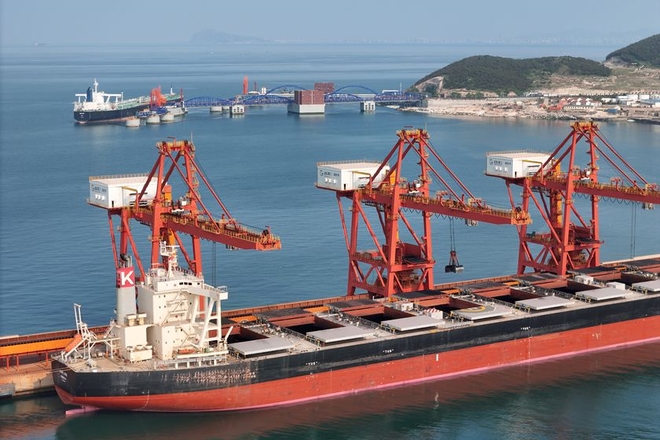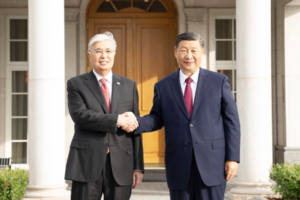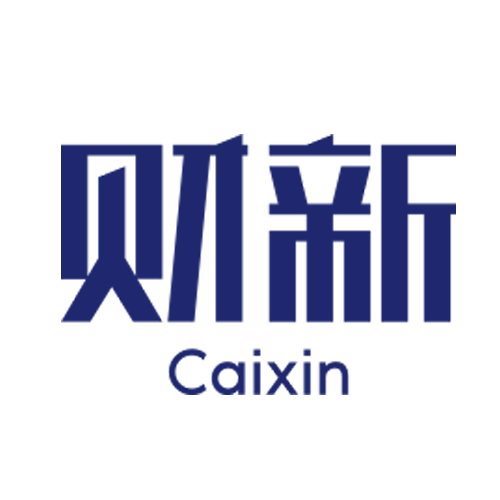Shi Lei: Why Following Trends Is No Longer Profitable (AI Translation)
Listen to the full version


文|石磊
By Shi Lei
投资圈中有一句俗语“趋势永远不会缺席”,跟随趋势曾经一直是好策略,最近几年却成了深坑。深坑在2024年的市场中再次出现,最近三个月,无论是股票还是大宗商品,在上涨后几乎都跌回原位,上车稍晚的投资者多数亏损。实际上,跟随价格趋势的策略自2022年后就开始失效。为什么跟随趋势赚不到钱了?
There is a saying in investment circles: "Trends are never absent." Following the trend once proved to be a reliable strategy, but in recent years, it has turned into a major pitfall. This pitfall re-emerged in the 2024 market. Over the past three months, be it stocks or commodities, they've almost always returned to their original prices after a rise, leaving most investors who got in a bit late at a loss. In fact, trend-following strategies have started to fail since 2022. So, why is following the trend no longer profitable?
因为伴随趋势的还有“噪音”,当你身处一个高噪音环境中,很难分辨哪个才是真正的趋势。我们当前所处的经济结构调整的环境,就是一个高噪音环境。
Because trends are often accompanied by "noise," it can be challenging to discern the real trend in a high-noise environment. The current economic restructuring environment we are in represents such a high-noise scenario.
如何降低噪音、看清趋势?可以使用多视角滤波方法降噪,俗称“盲人摸象”,但多视角并非简单拼装。如果只把一个望远镜架在显微镜上,效果不如单独使用。如果知识缺少系统化的融合,多个领域的专家一起开会也未必有建设性的结论。
How to Reduce Noise and See Trends Clearly? One can employ multi-perspective filtering methods to reduce noise, commonly referred to as the "blind men and an elephant" approach. However, having multiple perspectives does not mean simply piecing things together. Mounting a telescope onto a microscope will not yield better results than using each device independently. If knowledge lacks systematic integration, even a meeting of experts from multiple fields may not produce constructive conclusions.

- DIGEST HUB
- Trend-following investment strategies have largely failed since 2022, influenced by a high-noise economic environment.
- China's economy shows structural differentiation with steady physical consumption growth, while energy and manufacturing sectors face key contradictions; coal stocks have shifted from cyclical to stable investments.
- Wealth is fluid and requires systematic asset management insights, not just possession of physical assets.
The article discusses why trend-following investment strategies have become unprofitable in the contemporary market, especially since 2022, and elaborates on the complexity of identifying true trends amid economic noise [para. 1]. Traditionally, following market trends was a reliable investment strategy, but this approach has faltered recently. In 2024, both stock and commodity markets have shown a tendency to return to their original prices after a rise, causing losses for late investors [para. 1][para. 2]. The root cause is the high-noise economic environment, making it challenging to distinguish genuine trends from superficial fluctuations [para. 3].
To mitigate noise, multi-perspective filtering methods, often called the "blind men and an elephant" approach, are suggested. This entails systematically integrating various perspectives rather than combining disjointed pieces of information. A deliberate and structured approach prevents erroneous conclusions that could arise from isolated viewpoints [para. 4]. Since the start of the year, discrepancies between macro and micro economic data have made it difficult to draw consistent conclusions about trends. This uncertainty persists, even after on-site investigations [para. 5][para. 6].
To accurately navigate this volatile scenario, one must return to fundamental principles, systematically integrate multiple perspectives, and understand the underlying structure of the system. This approach helps identify the main drivers of economic evolution and prepare strategies for various possible scenarios [para. 7]. The current Chinese economy exemplifies this complexity. Despite consistent growth in physical consumption, structural differentiation has emerged. Notably, China's global trade share has remained resilient, with the supply chain adding more intermediate links, influenced by ongoing Sino-U.S. trade frictions [para. 8][para. 9].
Several contradictions exist within the economic systems of China and the U.S., showcasing a complementary dichotomy. China's primary economic issues revolve around energy, raw materials, and manufacturing, focusing on deleveraging and savings. In contrast, the U.S. grapples with technological and financial issues amid a decline in national net savings [para. 10]. Since 2021, China has prioritized energy system security, transforming coal from a cyclical industry into a stable, long-duration sector integral to energy security [para. 11][para. 12].
Reevaluating stock pricing fundamentals reveals that coal stocks, traditionally viewed as cyclical, are now seen as stable, high-certainty investments. Despite steady coal prices, coal stocks have surged 40% due to improved valuation metrics, including an increased free cash flow and reduced risk premium [para. 12][para. 13]. Meanwhile, some consumer stocks are trending downward due to systemic changes, transforming them into new cyclical stocks [para. 14].
The export manufacturing sector has seen significant gains, attributed to not just external demand but also strategic disruptions in traditional markets by leading manufacturers. Even within pressured sectors like raw materials manufacturing, leading companies maintain profitability and healthy cash flows, despite industry-wide overcapacity. This scenario could pave the way for investment opportunities driven by industry consolidation and stricter energy consumption policies [para. 15][para. 16].
Ultimately, the article concludes that "value" in the economic context is dynamic, determined by continuous interactions within the system. Therefore, asset management requires a systematic understanding of these relationships. Echoing the advice inscribed at Hangzhou Ling Shun Temple, successful investment necessitates a mindset of not clinging to static assets but recognizing the fluid nature of value [para. 17][para. 18]. The insights provided in this article are credited to Shi Lei, Chairman of Xiyinzi Technology, and are excerpted from Caixin Weekly's upcoming July 1 issue [para. 19][para. 20].
- Attractor Technology
吸引子科技 - Attractor Technology, chaired by Shi Lei, focuses on providing insights into macroeconomic trends and investment strategies. The company emphasizes the importance of system analysis and understanding fundamental changes in economic structures to make informed investment decisions. They argue that traditional trend-following strategies have become less effective in high-noise environments and stress the need for systemic, multi-perspective approaches to identify and adapt to evolving market conditions.
- 2021:
- The primary contradiction in China's energy system shifted from insufficient installation of new energy sources to energy system security issues.
- Since 2022:
- Trend-following strategies started to fail.
- Since 2023:
- The Chinese economy and stock market exhibited a high degree of structural differentiation, with steady growth in physical consumption volume and changes in value transfers.
- Over the past year (2023):
- Coal stocks surged by 40% despite stable coal prices.
- 2024:
- Trend-following re-emerged as a pitfall in the market in 2024.
- Since the beginning of this year (2024):
- Macro investors observed a stabilization and recovery in global manufacturing, while industry-centric investors experienced downstream weakness and tight capital chains.
- GALLERY
- PODCAST
- MOST POPULAR





 Sign in with Google
Sign in with Google
 Sign in with Facebook
Sign in with Facebook
 Sign in with 财新
Sign in with 财新